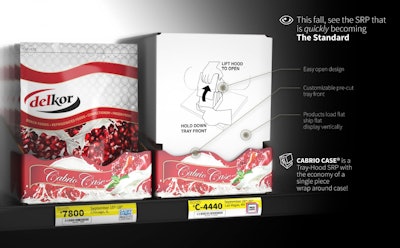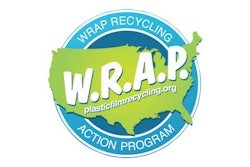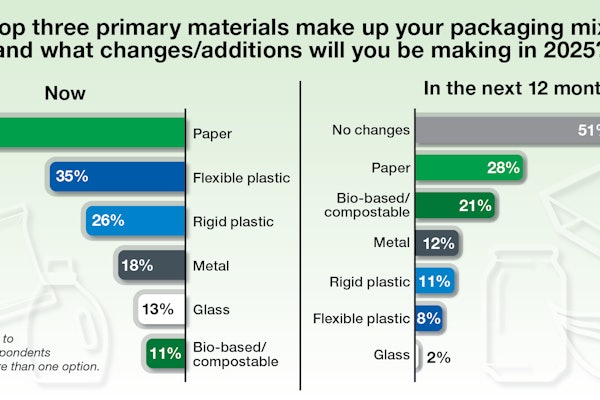Retail disruption is all too real. As retailers contend with consumers shifting their attention to the perimeter of the store, higher labor costs, smaller footprints and tighter margins, many are trying to adapt to the new competitive landscape by turning to shelf-ready packaging, according to a new guide published by Rovema North America and Vanguard Packaging. Titled “Successfully Navigating Shelf Ready Packaging Disruption,” the guide outlines how CPG manufacturers can create shelf-ready packaging for retailers that can improve operational efficiency, help differentiate products and boost sales — ultimately becoming a valued resource and partner for retailers.
Shelf-ready packaging is a configuration that incorporates enough secondary packaging to protect products during shipment but simultaneously serves as a restocking and aesthetic retail display unit.
Retailers reap a multitude of benefits from shelf-ready packaging, according to the guide. Products in shelf-ready packaging are easy to identify, making it simple to pull orders from distribution centers. It also allows employees to locate items in the back of the store faster, reducing the likelihood of out-of-stock items and minimizing restocking. Because the cases are ready to display once they are open and are usually lighter and smaller than conventional secondary packaging, shelf-ready packaging reduces labor costs. Employees can easily deliver multiple units to the shelves and restock items in one motion instead of individually stacking the products on the shelves. In addition, retailers may generate more facing revenue with shelf-ready packaging. In some cases, up to 20 percent more facings can be created on a given shelf space, according to the guide.
Shelf-ready packaging can also help manufacturers score some wins as well. The guide says that manufacturers can boost their sales 3 percent to 5 percent by reducing out-of-stock inventory for retailers. Manufacturers can also incorporate complementary marketing on the primary and secondary packaging to increase shelf appeal and sales. It also offers opportunities to create retailer- and market-specific designs that could be easily adapted with material changes while retaining consistent operational and packaging formats.
Shelf-ready packaging will differ depending on the retailer’s needs, product, supply chain and primary package. But here are some common factors manufacturers should keep in mind when creating shelf-ready packaging, according to the guide.
- Cartons, bag-in-box, laminate film structures, flute and paperboard are great options for shelf-ready packaging. They can be open cleanly, simply and quickly without knives.
- Stand-up pouches are an ideal vehicle for shelf-ready primary packaging. They’re visually appealing, structurally stable, and offer end user flexibility and convenience.
- Primary packaging graphics will likely change as more cartons transition to stand-up pouches. Options such as true offset linear seal can create full panels for graphics without seals interrupting the layout.
- Simple changes in primary package configuration, such as making them taller and narrower, are key to achieving better shelf and pallet optimization.
- Secondary packaging must be functional to reduce both labor and distribution costs. Employees must be able to break the packaging’s perforations easily and cleanly and be able to easily remove and break down lids. At the same time, the packaging must have stacking strength and damage protection during distribution.
- Marketing and engineering should work together to create shelf-ready packaging that consumers find easy to shop. The best shelf-ready packaging helps consumers to quickly identify the product, grab it and move on down the aisle.
- Without compromising on shelf life, convenience and package integrity, shelf-ready packaging offers opportunities for sustainability. Ideally, the primary and secondary packaging should be made entirely of paper-based materials (no shrink film) without staples or excessive tape or glue.
To learn more about how to create shelf-ready packaging, download the guide, “Successfully Navigating Shelf Ready Packaging Disruption.”


























